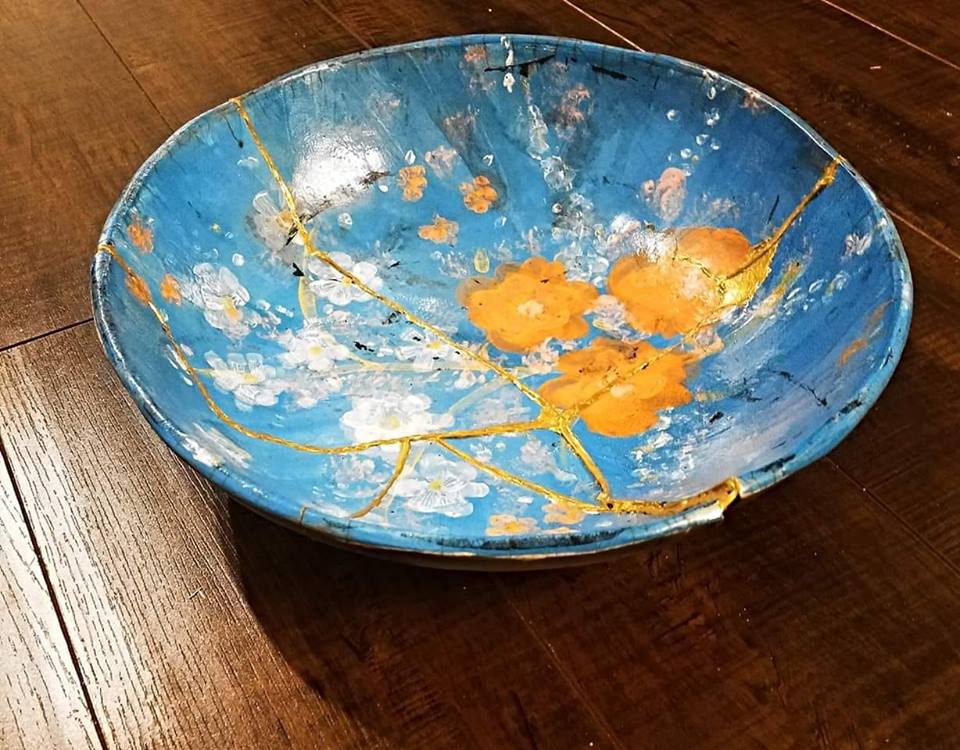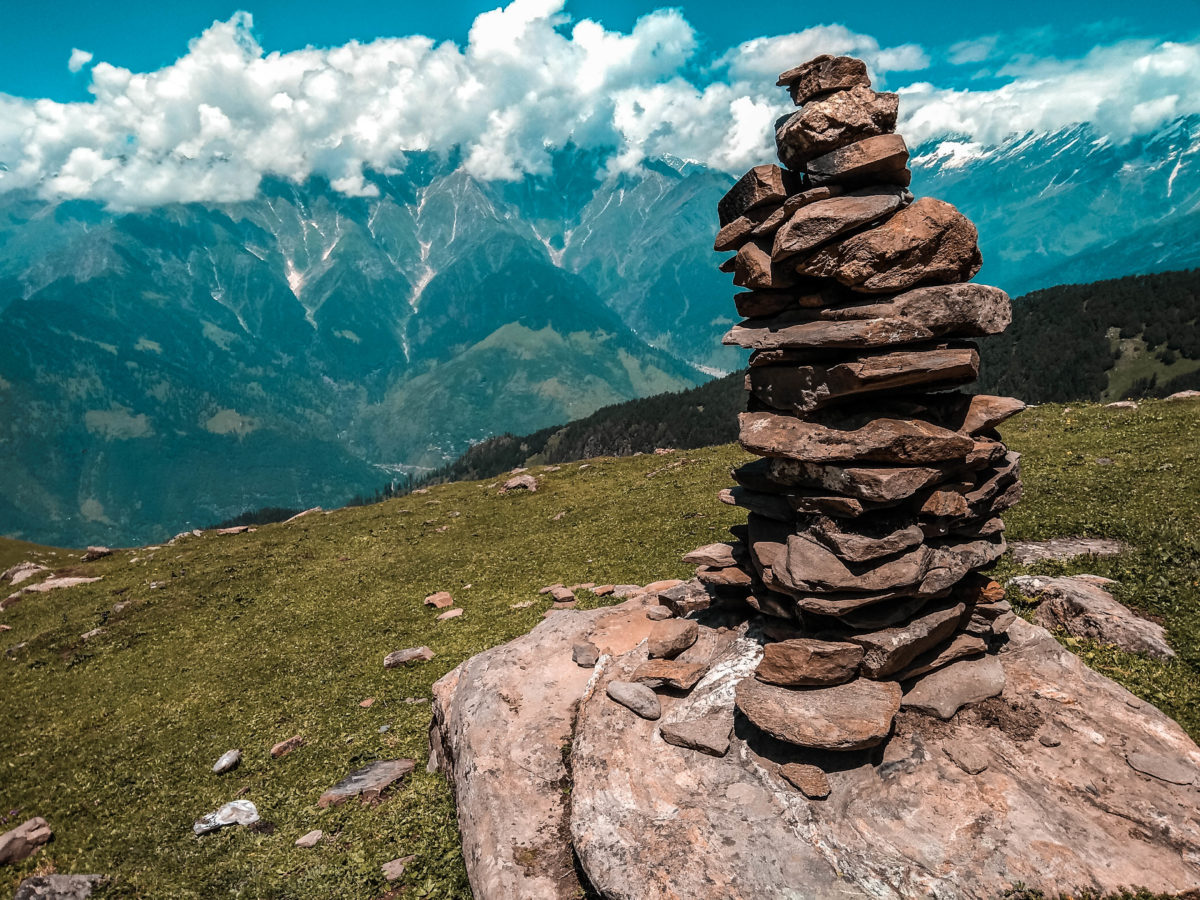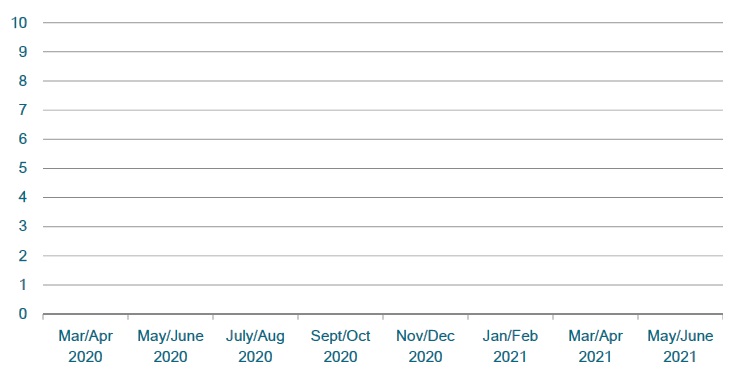
For many of us, the beginning of fall term is a kind of re-entry after a year and a half of pandemic. The pandemic has been one of the most significant experiences in many of our lives. Rather than simply resume our previous routines, this summer may be a time to take stock of what has happened in our lives, what God may be inviting us to let go of and embrace, and how God may want to knit together the experiences of our past year into something different and beautiful. This retreat guide, which may be used over a two-day retreat, or more spread out times of reflection is adapted from a retreat guide Carolyn Carney, InterVarsity’s National Director of Spiritual Formation, developed for a regional staff ministry team.
____________________
PREPARING
Find a day before the beginning of the new academic year where you can spend a day with God. Each section of the retreat has approximate times. In its entirety, the approximations amount to a full day. But you can break it up if that seems better to you. Consider breaking the retreat up, if you need to, after “Letting Go and Holding Fast.”
Think about going to a park, a retreat center, a simple room in a friend’s house, or your church sanctuary. Most importantly, find a place where you have little interruption or distractions.
Consider inviting some friends or your team to join you, either to be together in-person or virtually. Most of the time you’ll be alone with the One who loves you like no other, but make use of a check in time at the beginning of the day to pray briefly with one another, and at the end of the day to debrief, and so deepen your experience.
Bring your bible, journal, a pen. Since you’ll be doing some reflection, having your calendar or photos you have taken over this year may be helpful. You’ll want to put your phone on airplane mode or silent.
____________________
Retreat Outline
BEGINNING – 5-10 mins
GATHERING UP THE BROKEN PIECES: Honoring our grief – 30-45 mins
SEEING THE BIG PICTURE – 30-45 mins
LETTING GO AND HOLDING FAST* – 45-60 mins
TOWARD INTEGRATION – 45-60 mins
CONCLUSION: Write a Collect for Kintsugi ’21-’22 – 30-45 mins
*Possible break here into a second day.
____________________
From Devastating Wilderness To a Different World: A Re-Entry Retreat for 2021
“The Desert Fathers believed that the wilderness had been created as supremely valuable in the eyes of God precisely because it had no value to men. The wasteland was the land that could never be wasted by men because it offered them nothing. There was nothing to attract them. There was nothing to exploit. God’s plan was that the Chosen People should learn to love Him in the wilderness and that they should always look back upon the time in the desert as the idyllic time of their life with Him alone.”
-Thomas Merton, Thoughts in Solitude, 1956
“Do not fear for I am with you…There is no other who can deliver from my hand; I work and who can hinder it?…I am the Lord who makes a path in the mighty waters…I am about to do a new thing; I will make a way in the wilderness, and rivers in the desert.”
-Isaiah 43:5, 13, 16, 19
BEGINNING -5-10 mins
Find a comfortable place. Take a number of slow, deep breaths. Relax. Come into an awareness of God’s presence with you. Smile. He has been waiting for you and warmly welcomes you. You are home. Take a few more deep breaths, and enter into God’s quiet and his love for you.

Kintsugi is a traditional Japanese repair method in which cracks and chips in a ceramic vessel are glued with a sap mixture from a tree and then embellished with paint made from precious metals, like gold. It dates back to the 15fth Century. But don’t think of it as repairing something so it’s “as good as new” or returning it back to how it was, but rather, it is about making a different vessel altogether.
Perhaps Kintsugi is an apt metaphor for our post-pandemic world and life.
We should never go back to “normal.” We yearn for something different. We fight for a new world, where the broken bits aren’t tossed out, but re-envisioned, where the fracture lines aren’t erased but repaired with something precious.
“The tea masters [those who developed Kintsugi] saw through the brokenness an incomprehensible beauty, a landscape in between the cracks, and they started to invoke ‘mending’ through the imagination.”
-Kunio Nakamura, translated by Mako Fujimura and Keiko Yanaka, The Book of Kintsugi
GATHERING UP THE BROKEN PIECES: Honoring our grief – 30-45 mins
The problem with all the clamoring about a “return to normalcy” is that when we ignore the grief and brokenness that we have experienced we also relinquish the acquisition of wisdom and compassion that comes when we make space for loss. To just move on to what is next reeks of callousness and consumerism. We just don’t throw out the broken pottery and buy a new one.
In Kintsugi, there is a value in scars, fault lines and chips. At the essence of the art is recognizing that when a broken vessel is repaired it can be even more beautiful. And is truly unique. We are beautiful when we embrace our brokenness rather than try to hide it
When the Israelites, under Joshua’s leadership cross over the Jordan, ostensibly, from the wilderness into the land promised to them by God, the crossing is reminiscent of the dramatic Red Sea crossing: water dividing and piling up, while God’s people cross into safety on dry ground. In this crossing (Joshua 3-4), the Lord instructs Joshua to have a man from each of the twelve tribes to pick up a stone from the river and to make a memorial so that, “When your children ask “What do these stones mean?…” [you will tell them this story] “…so that all the peoples of the earth may know that the hand of the Lord is mighty, and so that you may fear the Lord your God forever” (Joshua 4:21, 24).

- If you were among that group of Israelites, what would make up your memories of those 40 years in the wilderness (hard times, but God’s provision and presence) and the sea and river crossings, places where you saw the hand of God at work?
- “This has been a year of loss, doled out in unequal measure across lines of race, class, and age: the loss of life, of livelihood, of embodied togetherness, of familiar rhythms of shared time and occasions that mark our lives” (Adam Horowitz). As you think back over this season from Feb-March 2020 until now, what are the losses, or griefs (the cracks and chips) that you have experienced? This is a safe place if emotions arise. Jesus is with you.
- Surely he has borne our griefs and carried our sorrows (Isaiah 53:4a). We have not been alone in carrying them. Jesus has been with us. Invite Jesus to make his presence known to you during your experience of all these griefs. Listen for what he wants to say to you.
- Consider doing something tangible with the griefs. Gather as many stones as griefs, set them up as a memorial. Or write each grief on a separate slip of paper and bury them in dirt or burn them.
SEEING THE BIG PICTURE – 30-45 mins
In a pandemic that has stretched out for many months, it is easy to get lost in the minutiae of daily routines and lose the overall picture. Taking a scan of the entire pandemic season can give us helpful information about ourselves and our life with God.
In this next section, you may want to take your calendar to help you remember things that affected you physically, emotionally and spiritually over these months. Invite Jesus to sit with you tenderly as you recall the events of these months.
Covid Life Graph
Use this graph to reflect on this past year. Draw a life graph with three lines:
- Physical (red): The physical line would be low if you were sick, but high if you were healthy.
- Emotional (blue): The emotional line might be low when you experience difficult emotions (e.g. resentment or self-pity) but high when you experience positive emotions (e.g. compassion or contentment).
- Spiritual (black): The spiritual line would be high when you are hearing and obeying God, but low when you couldn’t hear him or didn’t obey him.

Here is an example of one person’s journey:

What do you notice about your graph? What surprises you? What makes more sense to you now? What help/support relief did you experience?
LETTING GO AND HOLDING FAST – 45-60 mins
- What patterns or habits did you let go of because of the pandemic? What was a challenge? Were there any life-giving changes that surprised you? How were your priorities rearranged by Covid-19? What stands out to you? What is God inviting you to?
- Are there patterns or habits developed in the pandemic that you now need to let go of? As you think about returning, what priorities do you want to hold fast to?
- What of your own patterns or habits have you observed this year that you want to transform? Through the conditions and constraints of the pandemic, what have you seen that needs letting go in your life and/or ministry?
- How did God make himself know to you this year? Re-read Thomas Merton’s quote from the beginning and reflect on how God made his care known to you. What graces did you receive?
- What ways of being is God calling you to nurture? What is God inviting you to hold fast to?
TOWARD INTEGRATION – 45-60 mins
Integration is always a work in progress. We never reach completion this side of heaven. But we keep opening to the Spirit’s nudges and convictions, surrendering to love.
Lisa Espineli Chinn, in her book Think Home: A Re-entry Guide for Christian International Students, mentions three common coping strategies when we re-enter home after a cross-cultural experience. The three coping strategies are: Imitation, Isolation, and Integration. We use and need all three.
Imitation might be like jumping back into life the way it was pre-Covid, as if nothing happened or changed in the world. Or abandoning a life-giving practice that you undertook during 2020, because you don’t have time in your schedule, which curiously looks similar to your fall 2019 schedule. But it could be positive, like noticing a friend choosing a good habit that you’ve neglected and copying them.
Isolation, in our context, could be a reluctance to re-enter when things open up fully. This could be as a result of fear, the kind of fear that a worldwide pandemic gives. But it could also be that to make this change requires energy, and you are very weary still from the toll this year has taken. We long for some of the healthy rhythms and simplicity that being in lockdown gave. It is fairly common to want some isolation from time to time when we are in re-entry.
Integration is when we weave into our life the healthy things we gained from our experience in the other culture. The new rhythms we experienced last year gave rise in all of us to new practices. Which new practices is God inviting you to incorporate into your life? There may have been great upheaval and brokenness due to the pandemic, but in the art of Kintsugi, we bring together what has been broken into a new form. The vessel will look different than it was.
Read Isaiah 43:1-21 a couple times. What is God saying about the wilderness, about difficult times (remember this word is given to those in exile, living in a foreign land, where they encounter those hostile to their faith)? About himself? What is God inviting you to?
As you consider Isaiah 43, what is possible in 2021-2022? What has God developed in you during the pandemic to strengthen you and shape you for the future? What is God’s message to you?
Offer to God your integrated Kintsugi, made of the broken bits, the ashes of your griefs, and the hopes and longings for this coming year.
CONCLUSION: Write a Collect for Kintsugi ’21-’22 – 30-45 mins
A Collect (pronounced with the accent on the first syllable) is simply a prayer to collect (accent on the second syllable) the themes or threads of a given day, event, or service. Perhaps, a year. But there is a pattern.
For example:
Almighty God, to you all hearts are open, all desires known,
and from you no secrets are hid;
Cleanse the thoughts of our hearts by the inspiration of your Holy Spirit,
that we may perfectly love you, and worthily magnify your holy Name;
through Christ our Lord. Amen.
First line: Say something about the One whom you are addressing this prayer
Second line: say a little more, ending with a semicolon (;)
Third line: what is the main point of your prayer, what do you want God to do,
Fourth line: say a little more about that request, ending with a semicolon (;)
Finally: end with “a bird of praise” (Padraig O’Tuama).
____________________
Think back over this entire experience. How do you want to address the God you have experienced this past year? How do you want to shape the broken pieces into a new form? From what you have experienced and what God has said to you today, what do you want to ask him for in this coming year?
Consider praying this collect daily through this next academic year.
Amen and Amen.

Carolyn Carney is the National Director of Spiritual Formation for InterVarsity Christian Fellowship/USA.

Tremendous illustration and activities, ponderings and guides to prayer. Thank you.
We’re so glad you found this to be helpful!
Such a good itenerary for retreat. Thank you for sharing.
My heart is full while reading this again. Thanks a lot!